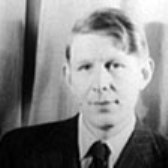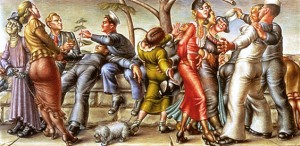By Emile Anceau

Allen Ginsberg lived fully through the second half of the 20th century. As America was then the dominant nation in the world, Ginsberg was at the very core of what was also the dominant scene – both cultural, and political. Throughout his life, he was involved in several political and social issues which divided America (his relationship with communism, his protest against Vietnam war and more generally for peace, his fight for homosexual recognition and legalization of marijuana… these are the main issues that public opinion remembers of the poet as an “activist” and which are all very tinted with the ideas of the movements appearing in the 1960s) and in this respect it could nearly be possible to write an American history through Ginsberg’s experiences and involvements as it seems that he was present on the scene of every major events of the second half of the 20th century in America. Even when he was still a young man in formation, Ginsberg was already at the very core of what moved America, since New York City in the 1940s was then undoubtedly “the place to be” for a twenty years old aspiring poet eager to discover the intellectual, poetical and musical scene of America, but also for a young man struggling with his sexuality.








